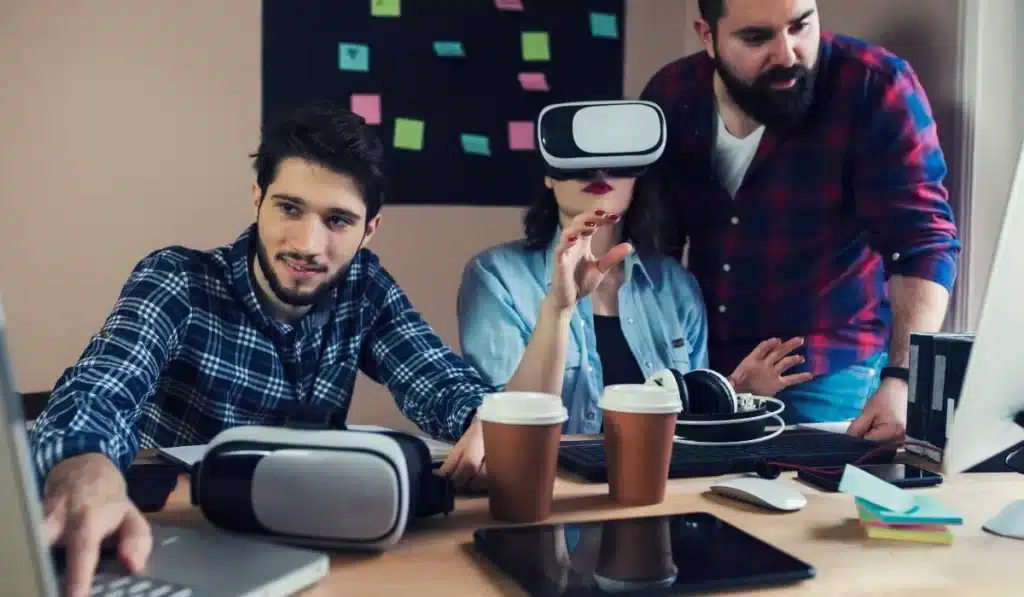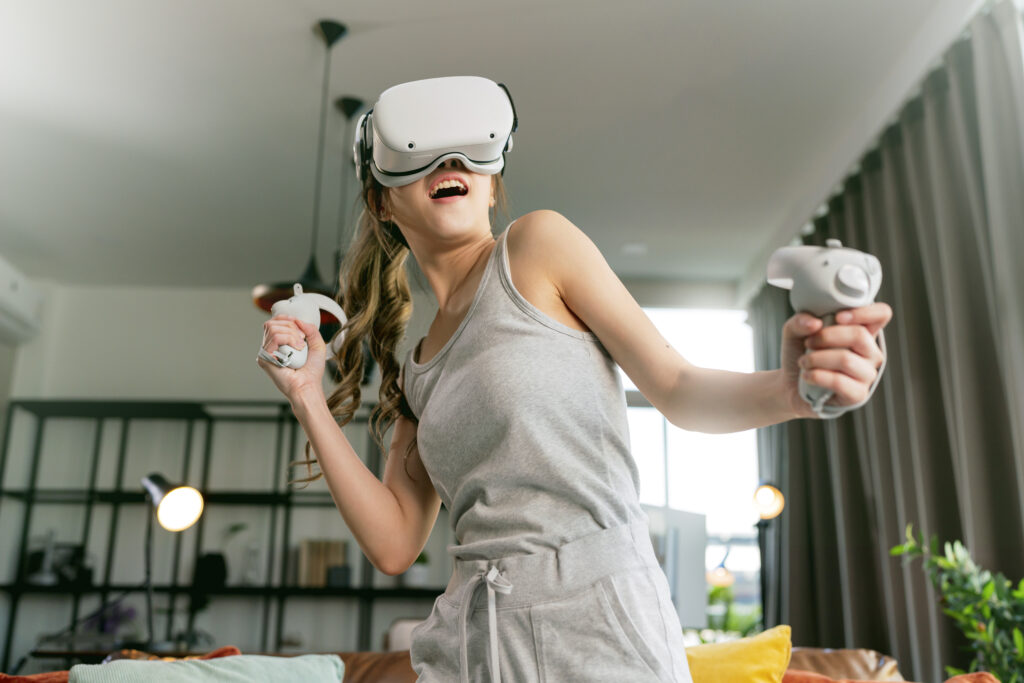In recent years, the Internet of Things (IoT) has expanded beyond smart homes and industrial applications, also making its way into the dynamic world of game development. This resurgence of IoT game development is opening up new avenues for creating interactive and immersive gaming experiences.
As developers continue to explore the possibilities, IoT game development is poised to revolutionize how we play and interact with games.
In this article, we want to discuss what exactly is IoT game development – as well as its impact on the world of video games and what the future holds for such technology.
Read also: Why IoT-based games could be the future of gaming
What is IoT game development?
IoT game development involves integrating IoT devices into the gaming ecosystem to create more interactive, responsive, and immersive experiences. These devices collect and transmit data that can be used to influence gameplay in real time.

For example, a fitness tracker could monitor a player’s heart rate and adjust the game’s difficulty based on their physical exertion.
Smart home devices like lights or thermostats could change the environment to match in-game events, creating a more immersive experience. Smart clothing could provide haptic feedback, allowing players to feel in-game actions physically.
IoT devices also have the potential to enable innovative multiplayer experiences. Players can use their smart devices to interact with each other’s game environments, creating collaborative or competitive elements that extend beyond the screen.
Data collected from IoT devices can also be analyzed to provide personalized gaming experiences, adapting to individual player preferences and behaviors, and enhance accessibility in games, offering alternative control schemes for players with disabilities.
The evolution of IoT game development
The evolution of IoT game development is a fascinating journey that intertwines advancements in technology with innovative game design.
The idea of integrating IoT in gaming began with simple concepts like connecting basic sensors and devices to games. Early examples include fitness games that used pedometers or basic heart rate monitors to influence gameplay.
As IoT technology advanced, the first generation of more sophisticated IoT devices, like smartwatches and fitness trackers, started being used in gaming. Back then, these devices allowed for more accurate tracking of physical activities, which could be incorporated into games, enhancing the player’s physical interaction with the game.
The development of more advanced sensors and the proliferation of smart devices led to even more interactive gaming experiences.
Games began to leverage data from various IoT devices such as smart home systems, environmental sensors, and health monitors to create dynamic and responsive gameplay scenarios.
Modern IoT game development focuses on seamless integration across multiple devices. Games can now use data from a combination of wearables, smart home devices, and mobile phones to create a cohesive gaming experience that spans various aspects of a player’s life.
There’s been a significant rise in games that focus on health and fitness, using IoT devices to track exercise, sleep patterns, and other health metrics.
Read also: How blockchain games with cryptocurrency work
5 key aspects of IoT game development

1. Real-time environmental interaction
IoT devices can sense and adapt to the player’s real-world environment. A game could change its weather conditions based on the actual weather outside, or adjust the game’s ambient sound based on the noise level in the player’s surroundings.
2. Physical state integration
Games can use data from fitness trackers to monitor a player’s heart rate or physical activity. This data can be used to trigger in-game events, such as increasing the difficulty level during periods of low activity or adjusting the game’s pace based on the player’s heart rate to enhance immersion.
Thanks to this technology, games can not only encourage physical movement by incorporating activity data from wearable devices but also use biometric data to introduce mechanics that react to the player’s physical state.
3. Adaptive difficulty
IoT devices can track a player’s skill level and adjust the game’s difficulty dynamically. For example, if a game detects that a player is struggling with certain tasks, it could provide additional hints or reduce the challenge.
4. Custom content delivery
Based on data collected from IoT devices, games can offer personalized content such as quests, challenges, or rewards tailored to the player’s preferences and habits.
5. Enhanced immersive experiences
IoT enables games to interact with various smart devices, like using smart lighting to change the color of the lights based on in-game events, enhancing the immersive experience.
Moreover, IoT game development facilitates new types of multiplayer interactions, and the integration with other IoT devices can extend the gaming experience beyond traditional platforms.
Be ready for the future of IoT game development

As IoT technology continues to evolve, its integration into game development is expected to become more sophisticated and widespread. Future advancements in IoT sensors, data analytics, and artificial intelligence will likely lead to even more innovative and immersive gaming experiences.
The next generation of IoT devices will be more accurate, efficient, and capable of capturing a broader range of data, including biometric information like heart rate, body temperature, and even brainwave activity.
This data can be used to create games that respond dynamically to a player’s physical and emotional state, making gameplay more engaging and tailored to individual experiences.
In the end, not only the devices will advance but the possibilities will increase for data analysis. Better data analytics will enable game developers to process and interpret vast amounts of data from IoT devices in real time. This means games can adapt instantly to a player’s actions and environment, offering a level of personalization and responsiveness that was previously unattainable.
Artificial intelligence (AI) will likely play a crucial role in this evolution, with studios using machine learning algorithms to analyze player behavior and enhance the gameplay. AI can create more intelligent and adaptive non-player characters (NPCs), provide personalized recommendations, and even predict a player’s next move, creating a seamless and intuitive gaming experience.
Read also: How to speed up your AI debugging process and save development time
The possibilities are limitless, and the future of IoT game development promises to be as thrilling as the games themselves. As this technology continues to advance, we can expect to see games that blur the lines between the virtual and physical worlds, offering experiences that are truly unique and unforgettable.
And we here at Main Leaf are ready for this new chapter in the world of video game development, just as we were to all others during our 13 years of experience in the industry.
If you liked this article, don’t forget to check out our blog, where we discuss many other subjects relating to the world of video games and video game development.

